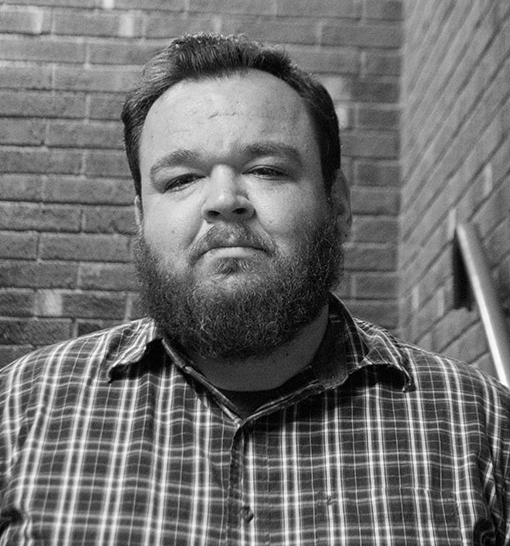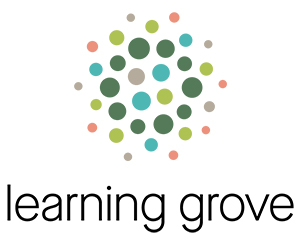By Vicki Prichard
NKyTribune reporter
When Jamie Sivrais walks into a high school to talk to students about Green Dot, a nationally recognized strategy to help students overcome violence, there isn’t a false note in his message.
And for an audience of teenagers, a reliable narrator matters.
A hip, affable young man, Sivrais doesn’t pretend to be anything other than who he is – a 33-year-old man who knows all too well about abuse and is committed to reducing it, and giving a voice to its victims. In short, he’s a product of everything that Green Dot is about because he is a victim of sexual abuse.
Just a kid
An only child, raised by a single mother, Sivrais knew very little of his father until he was in early middle school.
“He would see me sometimes, but then he’d start not picking me up, or not showing up for my birthday party, and mom decided when we moved she wasn’t going to make a big effort to let him know.”

James Sivrais
Later, when Sivrais would ask about his dad, pointing out that other kids had dads – and siblings – of which he had neither, his mother explained that his father loved him but “just doesn’t know how to be a dad.”
When Sivrais’s grandmother ran into his father at a local store, she connected him with his mother who said he could be part of their son’s life but must understand that it was a commitment that must be done right.
“We met him and I was really excited,” says Sivrais. “I found out that his wife was pregnant with my sister so I got a dad and a sibling.”
Happy to have a father in his life, Sivrais spent more and more time with him, visiting every other weekend. He would join his father, who delivered a local newspaper, waking up at 2 a.m., helping with the assembly, and then throwing the newspapers into yards.
“I thought it was really fun, it was a routine,” says Sivrais.
But after a while, a new routine came into place. When they would return home at 5 a.m. in the morning, his father began watching pornography in front of him.
“Ultimately, I knew that this shouldn’t be happening, but there was also a sense of, if I tell, they’ll be mad at him and I’ll get in trouble for watching this stuff,” says Sivrais. “I also remember being pubescent kid who had hormones and part of it was like, I’m not going to see this stuff anywhere else. I’m a kid learning about all this stuff and it was a very confusing time.”
Over time, things became increasingly confusing, and uncomfortable.
“It went from watching pornography to molesting,” says Sivrais.
When his dad began pressuring him to have oral sex, Sivrais knew he had to put an end to his visits.

One day after school, Sivrais told his best friend that he didn’t want to go to his father’s house anymore.
“That’s the first time I remember not wanting to go,” says Sivrais. He told his best friend, “I can’t go over there.”
When his mother picked him he told her what had been happening when he spent time with his father.
“And she said, “You mean he’s been sexually abusing you?”
Hearing those words were powerful, says Sivrais. He watched his tiny, ever-so-jolly, mother become a mighty protector of her son. Her first priority was to get him into counseling.
Mom as mighty advocate
“We saw a counselor at Children’s Hospital,” says Sivrais. “They accepted whatever insurance we did or didn’t have. At the time, I don’t think we were on welfare anymore, but we still didn’t have a lot of money.”
Once Sivrais began counseling, his mother confronted his father.
At the time, his father’s wife was pregnant with their third child, and Sivrais would soon learn that he had another sibling from an extramarital affair that his father had. When it was time for the case to come before a judge, Sivrais asked that his father not be put in jail because his stepmom and step-siblings would lose their home. The judge honored his request, but Sivrais’s father remains on the sexual offender registry to this day.
Sivrais would later learn that none of his other siblings were abused by his father.
“I asked my older brother once if anything ever happened to him and he said, ‘No, I only ever knew him as a great dad.’ It’s a hard perspective,” says Sivrais.
Sivrais moved forward with his life, with a conviction that victims of abuse need a voice, and that a conversation needs to take place so that classmates, friends, and bystanders understand abuse and what to do about it.
A mission to heal
During a recent Social Venture Partners Cincinnati Fast Pitch competition, which awards money to area nonprofits, Sivrais, representing WCC’s Green Dot shared his story. In three minutes, he told a room of more than 700 people how, as a young boy, when he told his classmates that his father watched pornography with him, no one said or did anything.
That silence among peers is something the Green Dot program cuts through; it starts the conversation with teenagers about abuse they might be witnessing themselves and poses the question of what does one do when they’re aware it’s happening. Sivrais illustrates by example, not only the sexual abuse but bullying too.

“Sometimes I share this story, or a version of it,” says Sivrais. “I did grow up kind of poor and had issues with bullying too.”
The Green Dot program was originated at the University of Kentucky in Lexington by Dr. Dorothy Edwards. The name comes from the idea that, if you think about an epidemic, it’s usually represented on a map by red dots.
In the Green Dot strategy, the red dots represent instances of someone’s decision to contribute to violence through words or actions. The idea is to replace those red dots with green dots, words or behaviors that promote safety and intolerance for violence. Through Green Dot’s violence prevention program, students learn how to identify the red dots and how to intervene, and that intervention creates a green dot.
A recent federally-funded CDC study led by Dr. Ann L. Coker in the American Journal of Preventive Medicine found that implementation of Green Dot in Kentucky high schools significantly decreased not only sexual violence perpetration but also other forms of interpersonal violence perpetration and victimization.
For Sivrais, and other members of his team at WCC, Green Dot is about forming relationships with the schools. They go into individual classrooms, such as an English class, and stay there all day, hitting every English class that day and talking with students. Sivrais works with Newport High School and Western Hills in Cincinnati. Other area schools the Green Dot team covers include Ludlow High School, Simon Kenton High School, Mason County High School, Bracken County High School, and Gateway Technical and Community College.
“We go into a high school and over a two-year period we try to have every student receive at least a 45-minute overview of Green Dot. That way every student knows what it is if they hear it referenced, at least the very basic tenets of Green Dot,” says Sivrais.
Mapping out change
The WCC Green Dot team works with high schoolers between grades nine through 12. Once they’re in the schools, a first point of order is to identify the popular opinion leaders, or POLs, which, Sevrais says, are not comprised of solely the straight-A students.
“Social leaders, popular opinion leaders are much more than that,” says Sivrais. “A lot of times we get pushback from teachers a little bit who don’t comprehend the program, who say, “That kid’s not a leader, that kid’s very disruptive in class.” We need him, because if we can get him to endorse Green Dot, and endorse violence prevention, then other people are listening to him – students listen to him. It’s all about influence.”
Once they compile the names of POLs, they invite them to an all-day training and dive into Green Dot and the changing culture.
Sivrais says one of his favorite questions is spurred from a video called “What would you do?” It places actors in social situations such as a young man being aggressive to a young woman in a park, or a man slipping a pill into a woman’s drink.
“I’ll ask them what would they do and we try to have an atmosphere of honest discussion so that if someone said, “I might be scared to say something,” that’s okay to say that,” says Sivrais. “I might say, “What if it’s a guy sitting there and it’s a girl being aggressive?” or ‘What if it’s a same sex couple?’”
Sivrais says they try to not be what they refer to as ‘old brand.’
“Old brand was people go into schools and say, ‘Guys, don’t hit your girlfriends,’ ‘Don’t sexually assault your girlfriend,’ ‘Girls, don’t get hit,’ ‘Don’t get sexually assaulted. If you do here’s a phone number and have a good day,’” says Sivrais. “That wasn’t doing anything. What does that say for the guy who would never do anything like that? We try to be gender neutral and let people know these things can happen to anybody.”
Sivrais says they begin every training with Connection Slips, which allows students to anonymously write on a slip of paper how they’re connected with the subject of abuse.
“If they wanted free pizza at lunch and wanted to get out of class, that’s okay too, but most of the time that’s not what we get,” says Sivrais. “It’s not always sexual abuse, but sometimes they’ll write, ‘I’ve seen things happen to my mom,’ ‘I saw a kid get bullied,’ or ‘I get bullied daily.’”
Sivrais’s commitment to power-based abuse goes beyond his work with Green Dot. Five years ago he founded the organization A Voice for the Innocent (AVFTI), which is a community support group for people affected by sexual violence.
“We have a website where people can share their stories, connect with people who’ve had similar experiences, and connect with resources,” says Sivrais. “It was based on my story, on the fact that I was abused and I got the support I needed.”
As for his own mission to prevent violence and give a voice to the abused, he credits his mother.
“I give that to my mom,” says Sivrais. “She was the one that got the support around me, got me help, and got me in counseling.”


















